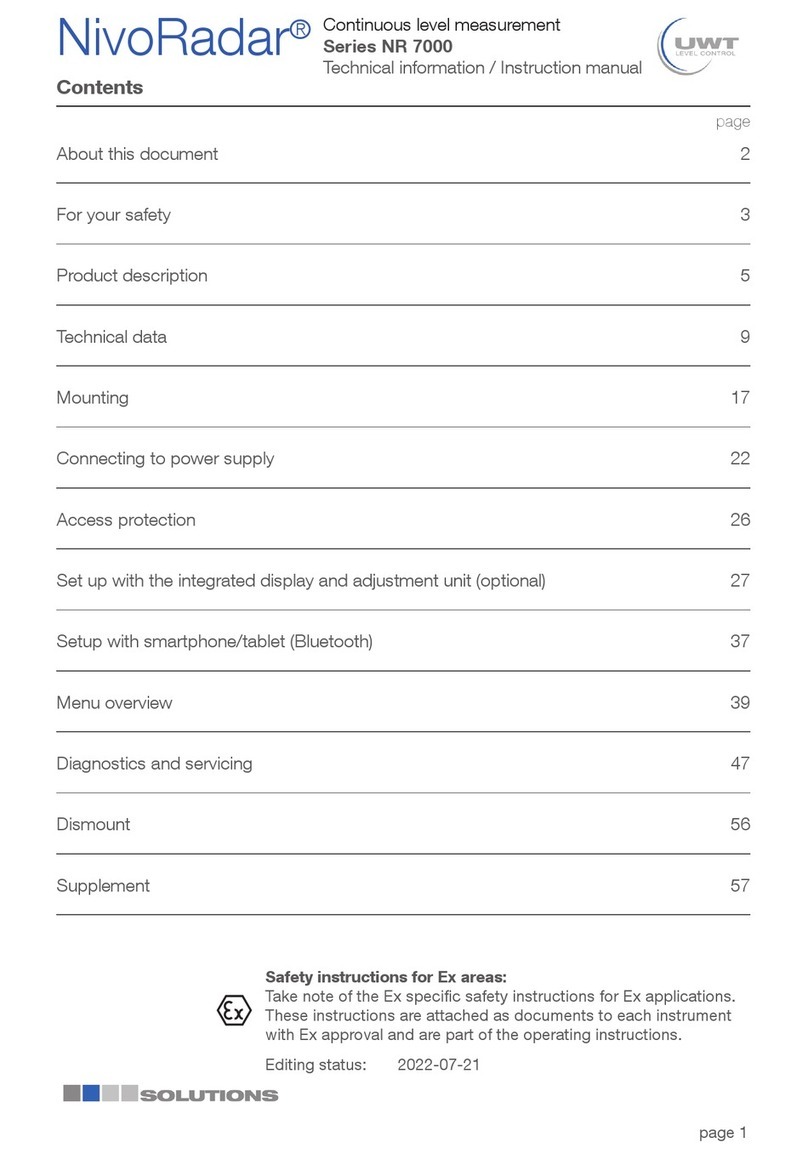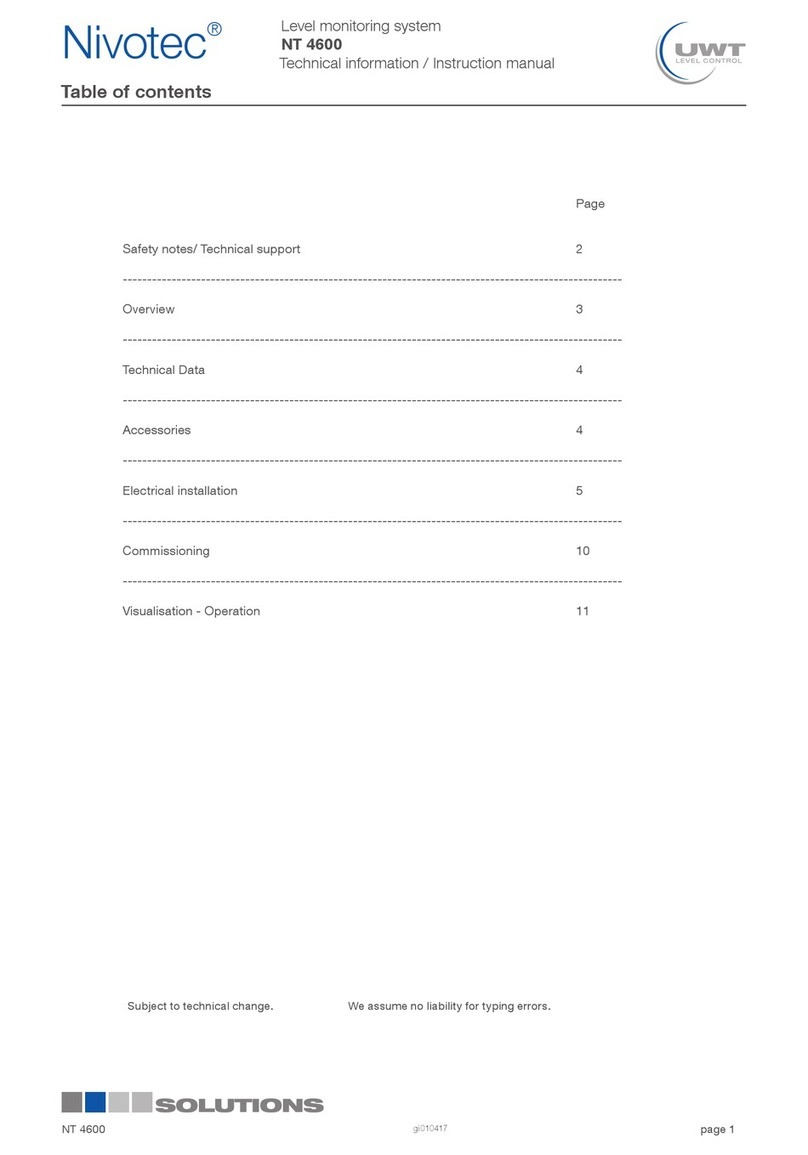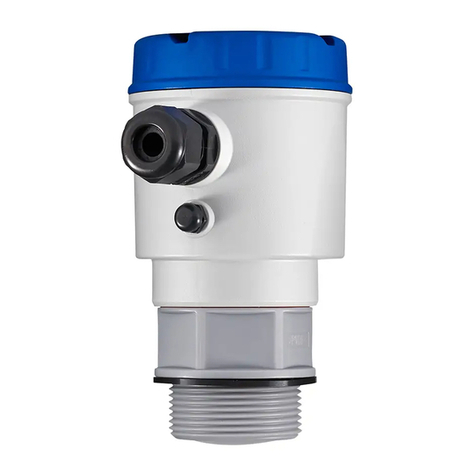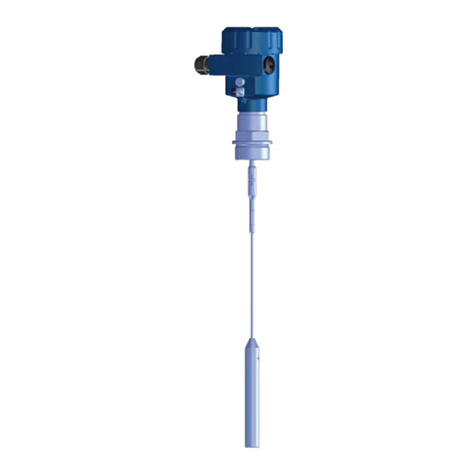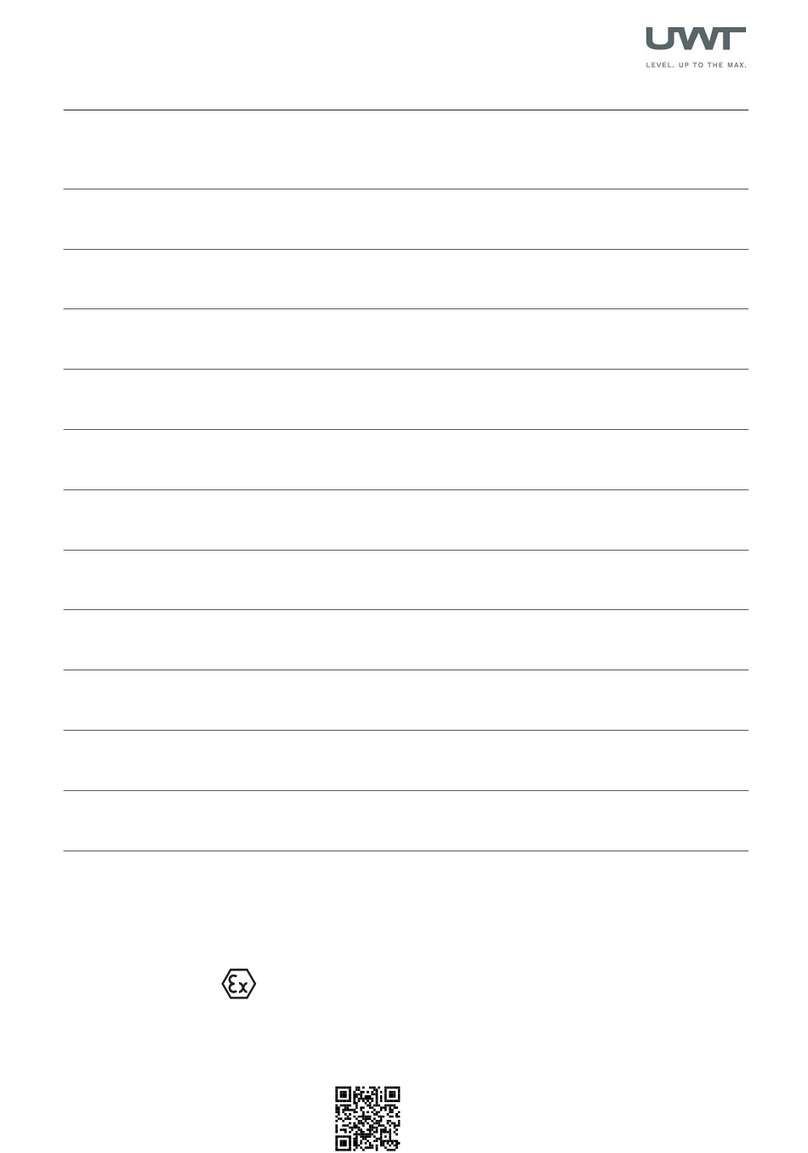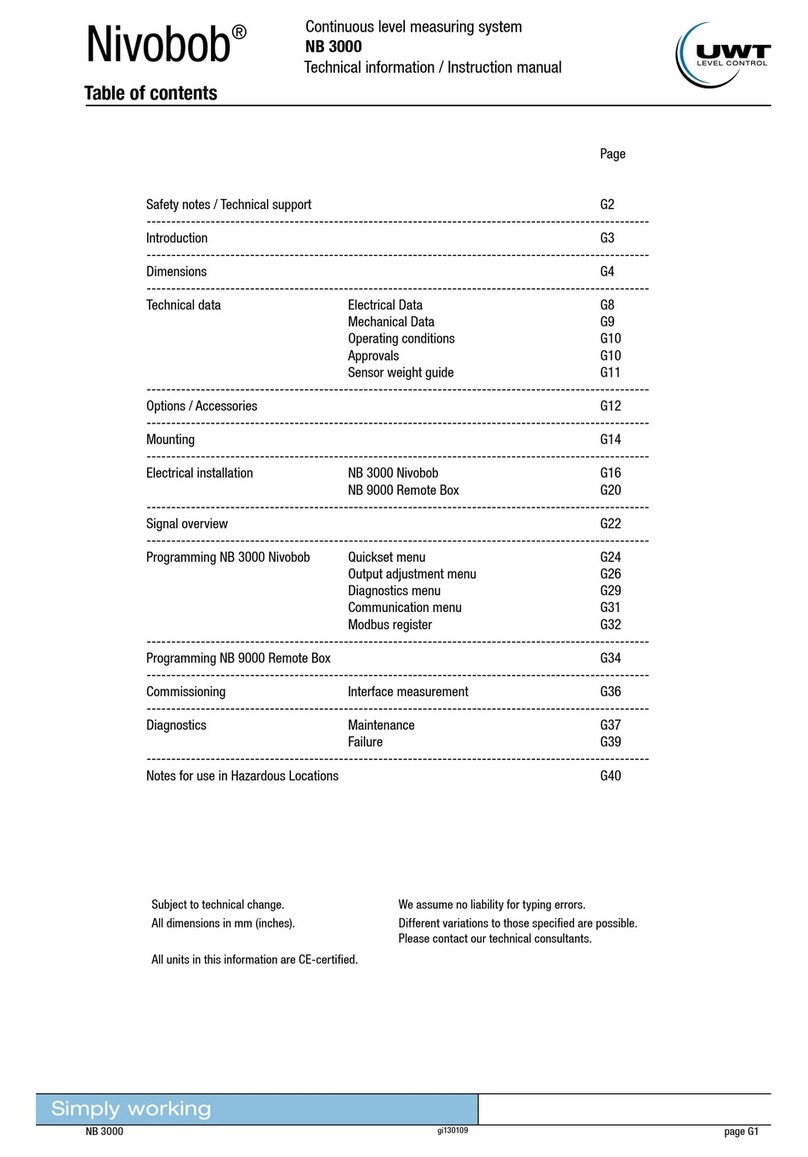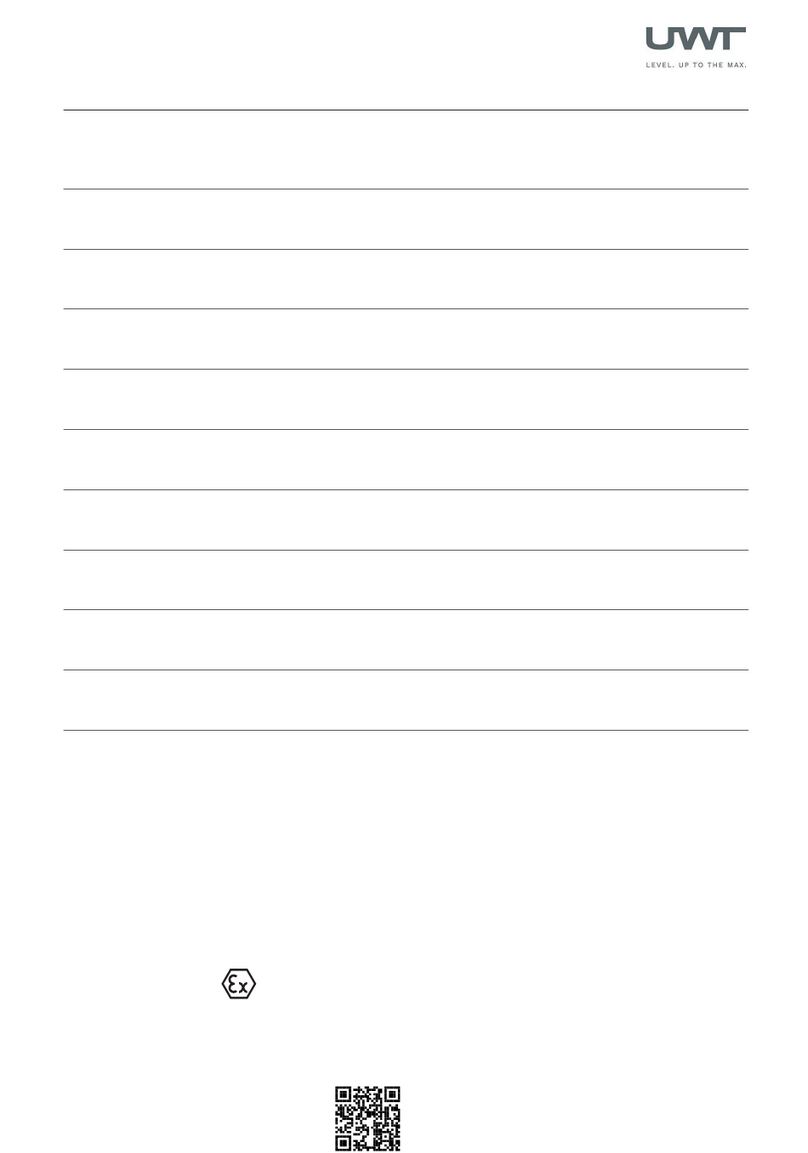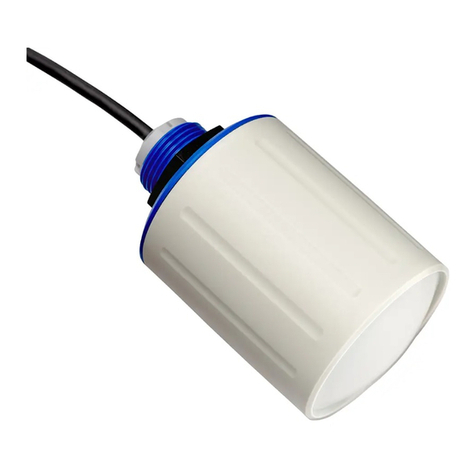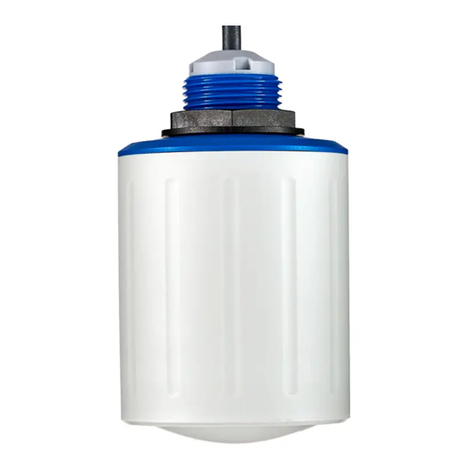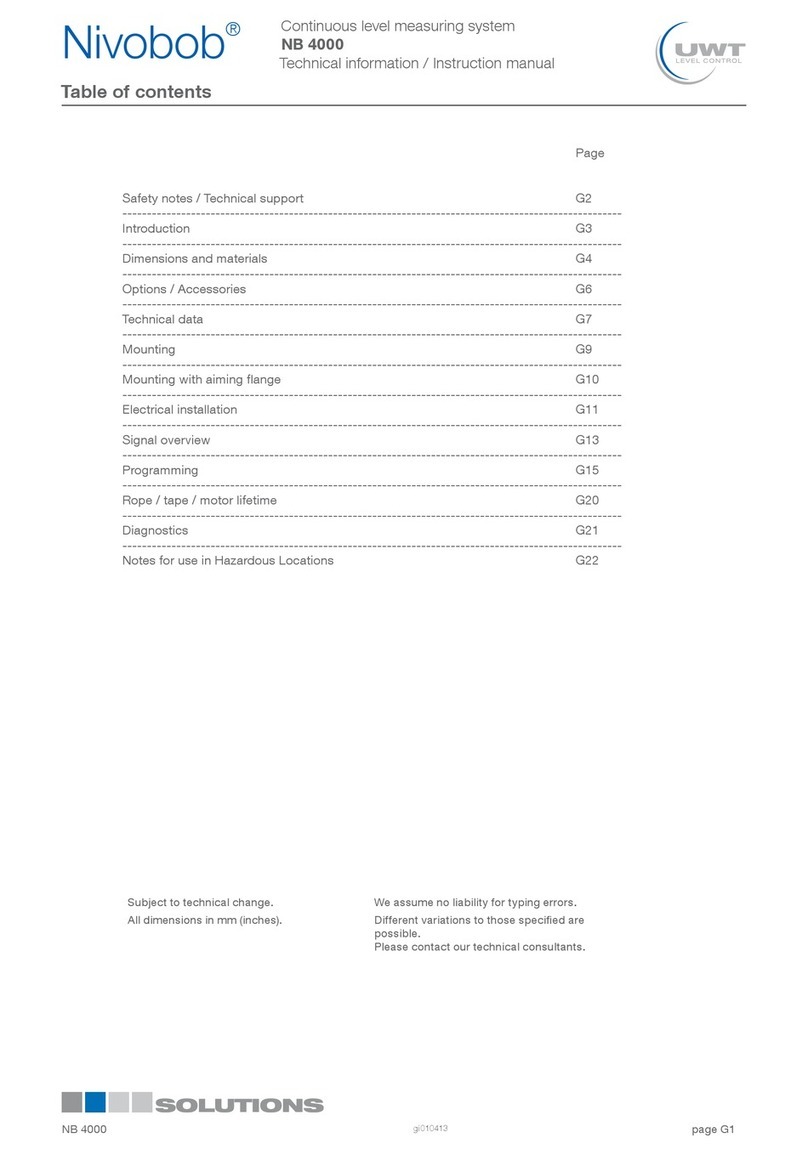
2
NivoGuide® 8100 • Two-wire 4 … 20 mA/HART
Contents
58878-EN-190215
Contents
1 About this document ............................................................................................................... 4
1.1 Function ........................................................................................................................... 4
1.2 Target group ..................................................................................................................... 4
1.3 Symbols used................................................................................................................... 4
2 For your safety ......................................................................................................................... 5
2.1 Authorised personnel ....................................................................................................... 5
2.2 Appropriate use................................................................................................................ 5
2.3 Warning about incorrect use............................................................................................. 5
2.4 General safety instructions............................................................................................... 5
2.5 EU conformity................................................................................................................... 6
2.6 NAMUR recommendations .............................................................................................. 6
2.7 Installation and operation in the USA and Canada ........................................................... 6
3 Product description ................................................................................................................. 7
3.1 Conguration.................................................................................................................... 7
3.2 Principle of operation........................................................................................................ 8
3.3 Packaging, transport and storage................................................................................... 10
3.4 Accessories and replacement parts ............................................................................... 10
4 Mounting................................................................................................................................. 12
4.1 General instructions ....................................................................................................... 12
4.2 Mounting instructions ..................................................................................................... 13
5 Connecting to power supply................................................................................................. 17
5.1 Preparing the connection ............................................................................................... 17
5.2 Connecting..................................................................................................................... 18
5.3 Wiring plan, single chamber housing.............................................................................. 19
5.4 Wiring plan, double chamber housing ............................................................................ 20
5.5 Switch-on phase............................................................................................................. 21
6 Set up with the display and adjustment module ................................................................ 22
6.1 Insert display and adjustment module............................................................................ 22
6.2 Adjustment system......................................................................................................... 23
6.3 Parameter adjustment - Quick setup .............................................................................. 25
6.4 Parameter adjustment - Extended adjustment................................................................ 25
6.5 Saving the parameterisation data................................................................................... 43
7 Diagnostics and servicing .................................................................................................... 44
7.1 Maintenance .................................................................................................................. 44
7.2 Status messages............................................................................................................ 44
7.3 Rectify faults................................................................................................................... 47
7.4 Exchanging the electronics module................................................................................ 50
7.5 Exchanging the cable/rod............................................................................................... 51
7.6 How to proceed if a repair is necessary.......................................................................... 52
8 Dismount................................................................................................................................. 53
8.1 Dismounting steps.......................................................................................................... 53
8.2 Disposal ......................................................................................................................... 53
9 Supplement ............................................................................................................................ 54
9.1 Technical data ................................................................................................................ 54
9.2 Dimensions .................................................................................................................... 66

